The following talk was given during Police Week 2014 when I was asked by Commissioner Michael DeSilva to give a “lecture” on the history of the Bermuda Police on the occasion of its 135th Anniversary.
Andy Bermingham prepared several vignettes in addition to this talk, but was off Island on an urgent family matter so they were given by Chris Wilcox. I have not included these vignettes because they will be published in a beautiful book on the History of the Bermuda Police that will soon be available for sale. The “coffee table” book contains numerous photographs and information that is not included in my talk, and I would urge anyone interested in the history of the Bermuda Police to purchase one as soon as possible. We will keep you informed about how to purchase books.
Chris Wilcox has written a superb History of the Bermuda Police which is available to view on the Bermuda Police Service website. CLICK HERE to view the highly informative article. This very comprehensive Bermuda Police History is contained in three chapters: The Early Years 1609-1929; The Years of Change 1930-1979; and The Years of Transition 1980-1999. Much of the information in the following talk was obtained from Chris Wilcox' history, which is without doubt a MUST READ for anyone conducting research about the History of the Bermuda Police.
Roger Sherratt
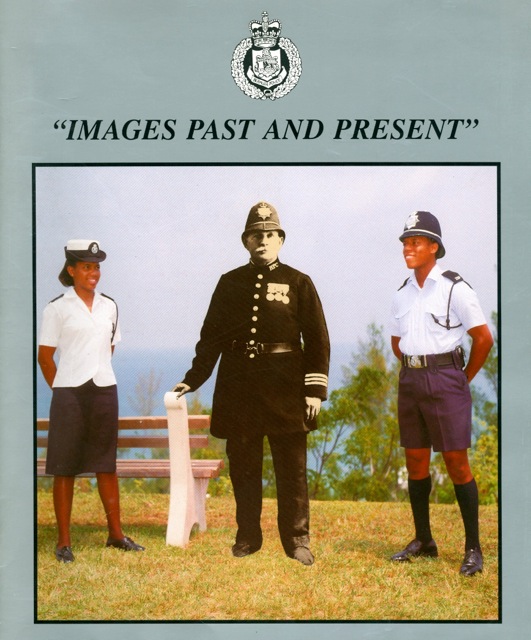
Good evening. As you will have heard, the Bermuda Police Service is celebrating its 135th Anniversary this month, and this evening we’d like to take you back in time for a brief look at the development of the Police during the last 135 years and beyond. We’ll be looking at crime and social problems the Police have had to deal with, the development of their communications, technology and transportation, and their recruitment and training.
But why did we need a Police Force in the first place? Have we always had crime and antisocial behavior in Bermuda along with a need to enforce law and order?
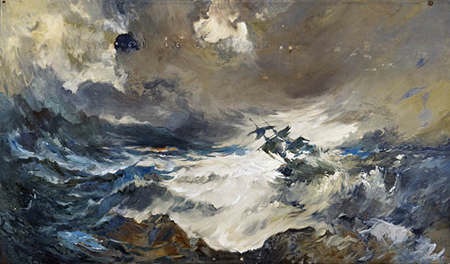
Our history books tell us the first murder in Bermuda occurred just a few months after the Sea Venture was wrecked off the East End, when Edward Waters killed a fellow sailor. Waters was caught, tried and sentenced to death, but he managed to escape and was eventually pardoned. So from the very earliest days someone had to deal with crimes as serious as murder - even if the culprit was pardoned!
The first mention of “constables” appears in the record books in 1620 at the assizes in St. George’s referring to constables working for the Bailiffs of the Tribes. We believe there was probably one constable in each Parish by that time although they were not paid except when executing a writ or a warrant. And its doubtful if they received any training
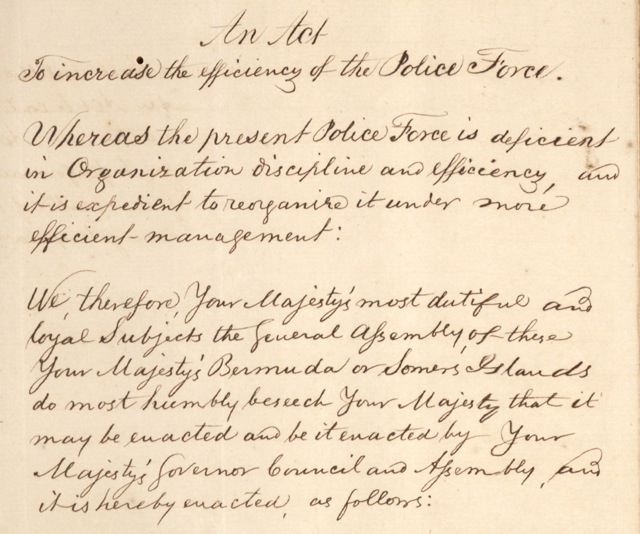
The first Police Act was passed in 1786 using the word “Police” for the first time. Constables were still unpaid “volunteers” and the Act set down a fine of £5 if the chosen few refused to carry our their duties as constables. By the early 19th century constables were finally being paid for their services – still on a part-time basis
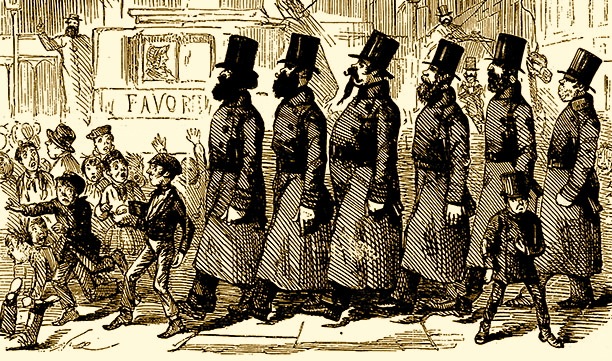
Sir Robert Peel established the world’s first professional Police Force in England in 1829 (“Peelers” or “Bobby’s” as they were called) and this quickly encouraged other cities and countries around the world to follow suit.
It took quite a while for the idea of a full-time Police Force to be accepted in Bermuda, and one event that may have shaken the Island was the first recorded murder of one of our volunteer policemen, Rural Constable Thomas Burrows Browne in 1867, who was stabbed while trying to recapture an escaped prisoner and died from an infection caused by his wounds. The culprit was committed to what was then called the “lunatic asylum”.
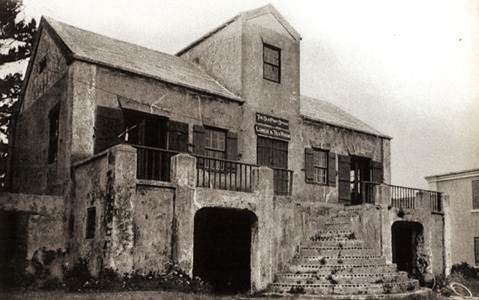
Perhaps the final push came with another murder in 1878 that shocked the Island. Edward and Anna Skeeters lived at Somerset Long Bay and were said not to have had the happiest marriage. When Anna mysteriously vanished her husband was the prime suspect, especially when bloodstained clothing was found at their home. Some time later several local fishermen discovered her body underwater tied to a heavy boulder, and Edward Skeeters was subsequently tried, convicted, and hanged for his wife’s murder. He was buried on the Island in the Great Sound that bears his name, and the boulder he tied to his wife to keep her body submerged was used as the headstone on his grave.
The year after the Skeeters murder, our Legislature passed the Police Establishment Act on 1st October 1879, and Bermuda finally had a full time Police Force.

The wording of the Act began, “Whereas the present police force is deficient in organization, discipline and efficiency it is expedient to reorganize it under more efficient management.”
But what were the Police having to deal with? Bermuda was occasionally shocked by a murder, and as in the Skeeters case these were often the result of what we call domestic violence. If there were domestic murders we can be sure that domestic violence was also prevalent - and in many ways nothing has changed. There were crimes such as breaking and entering, stealing, drunkenness in public, fighting and affrays and so on. Again we are still plagued with the same problems although affrays have morphed into gang violence.
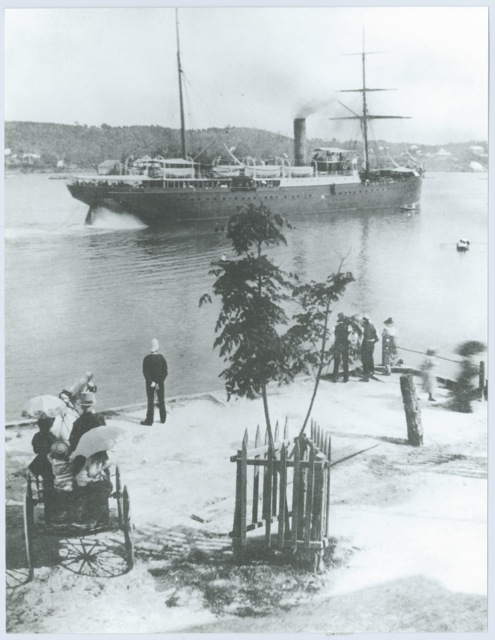
Our new Force comprised 10 full time officers led by Superintendent Clarke, a former army officer who was stationed in Hamilton along with 3 constables. His second in command was Chief Constable Dunkley (would he be a distant relative our current Premier?). He was stationed in St. George’s with 3 more constables, and another two were posted to Sandys Parish. They were supported by 21 Rural Constables who worked part-time. It’s likely that most of the full-time constables were ex-soldiers from the British Army who had been stationed here.
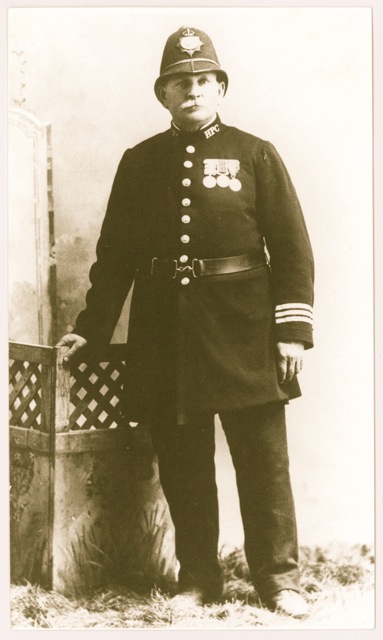
One of the earliest full-time constables was Thomas James Powell who joined the Police in 1884 following a short but remarkable career in the British Army. He served with the 11th Hussars during the Crimea War where he was awarded the Crimea War medal with 3 bars (Alma, Balaclava and Sebastopol).
Editors note - It was believed for some time that Thomas Powell had the middle name Joseph, but research by retired Inspector John Skinner finally revealed in 2020 that his correct name was Thomas James Powell.
Uniformed officers like Constable Powell wore this thick dark serge uniform which I can assure you is far from ideal in our summer climate. We believe there are direct descendants of P.C. Powell still living here.
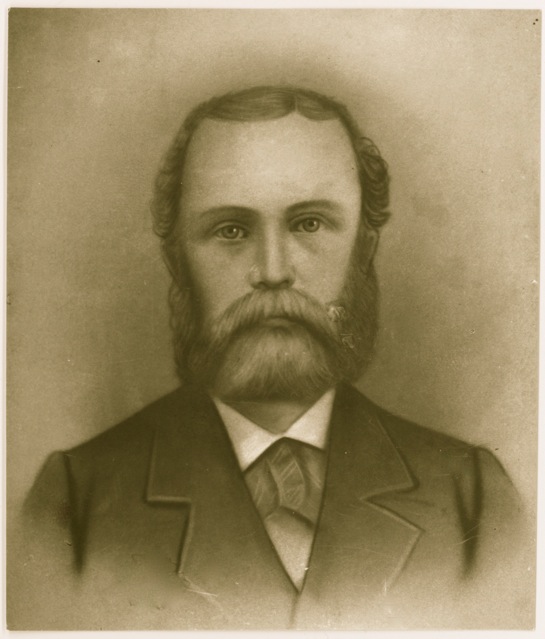
As I mentioned, Supt Clarke, seen here with his flowing beard, was our first head of the Police and he held office for 10 years.
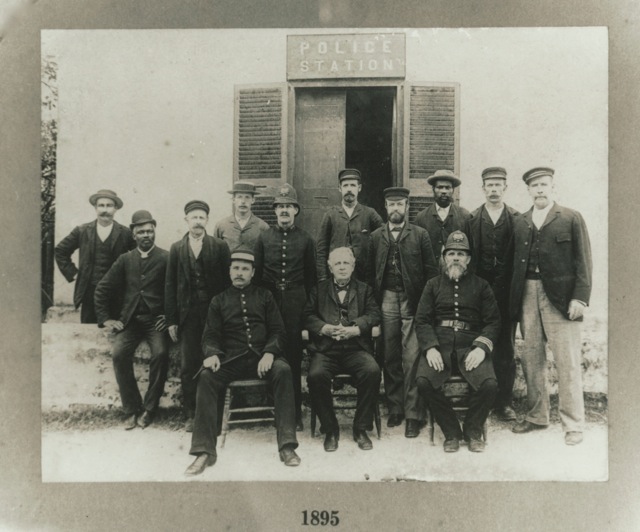
This very early photograph of the Hamilton Detachment of the Police was taken in 1895 outside the old Hamilton Police Station located at the corner of Church Street and Parliament Street next to the jail. The Force was then led by Superintendent Tear sitting to the left of the front row. While some officers were full-time, some would have been part-time Parish Constables.
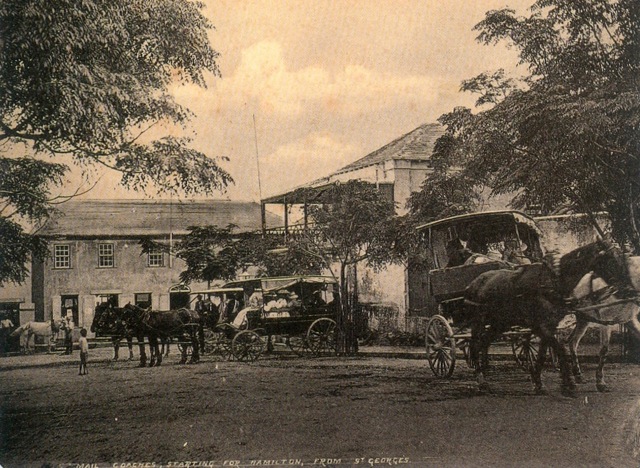
The only modes of transportation for policemen at that time would have been either on foot, or horse and carriage such as these operated by the Post Office between Hamilton and St. George’s, or by boat, although it would be more than 60 years before the Police acquired their own police vessel. We can find nothing to suggest that the Police ever owned a carriage of any kind.
But technology was making its presence felt. The first telephone lines began to operate between Hamilton and St. George’s in 1885, and the Police were no doubt at the head of the queue. 9 years later the Bermuda Electric Power Company began installing our first street lights.
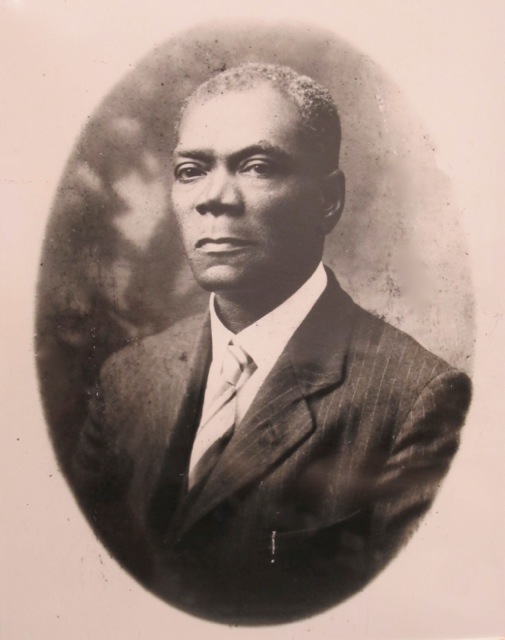
It’s believed that at the turn of the 19th century as many as half a dozen of our Rural Constables were originally from the West Indies where the sugar economy had collapsed, one of the first being Constable Henry Montgomery Beach who was born in St. Kitts and came to Bermuda in the 1890’s.
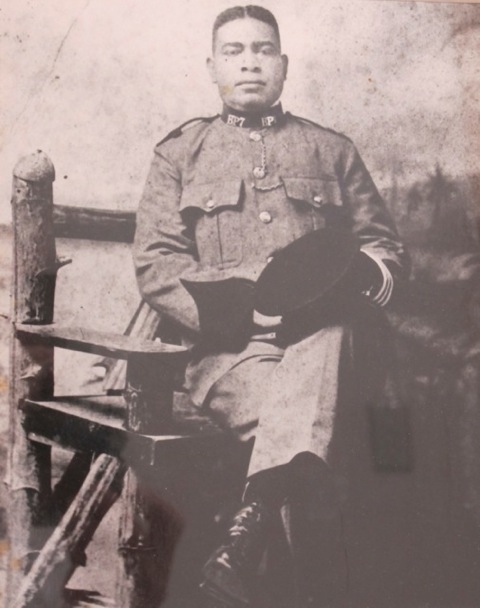

Photographs of police officers during those early days are quite rare, but here are two excellent photos of P.C. Charles Albert “Bo” Tucker, also from the West Indies - a familiar sight to Pembroke residents where he patrolled the beat for many years after joining the Police Force in 1912. On his retirement in 1935 the Bermuda Digest reported that he had “fought to maintain the British high standard of law and order upon the land” and also noted that he could remember a time when the Force consisted of just 12 full-time constables.
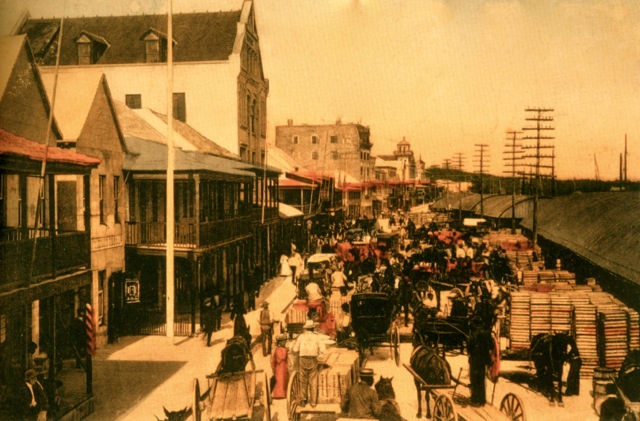
By this time Hamilton had become our capital and with both tourism and the population increasing, the Police Force was beginning to see a rapid increase in traffic as we see here on Front Street during crop season. There were efforts to bring automobiles to Bermuda, including our first public motor bus – the Scarlet Runner which, it was feared, would frighten horses and ladies! The public was strongly against allowing such menaces on our roads (“motoritis” it was called) and residents signed a petition demanding that all private motor vehicles be banned. Mark Twain signed the petition during a visit to the Island. And in 1908 the Motor Car Act was passed banning all private vehicles. Perhaps it would have been more apt to call it the “No Motor Car Act”!
However, the City of Hamilton was not without its traffic problems by this time. Trees planted on City streets were being severely damaged because they were being used as stands for pedal cycles and hitching posts for horses, with the Royal Gazette reporting that the trees were being “nibbled and killed off” and are “a disgrace to the City.” (City trees are still in the news. Some things never change!)
And we all thought that parking was only a problem when cars were allowed on our roads. By now the Police had established beats in Hamilton and St. George’s but officers in the outer Parishes were no doubt using pedal cycles.
At the outbreak of the First World War in 1914, the Police had a new problem - keeping the peace at military establishments such as the Dockyard. Visiting military troops invariably caused trouble in the form of drunkenness, general rowdy behaviour and fights with the locals. When I arrived here in 1964 we still had Shore Patrol working out of the Marine Police Station in Barr’s Bay Park to control rowdy visiting US and Canadian servicemen.
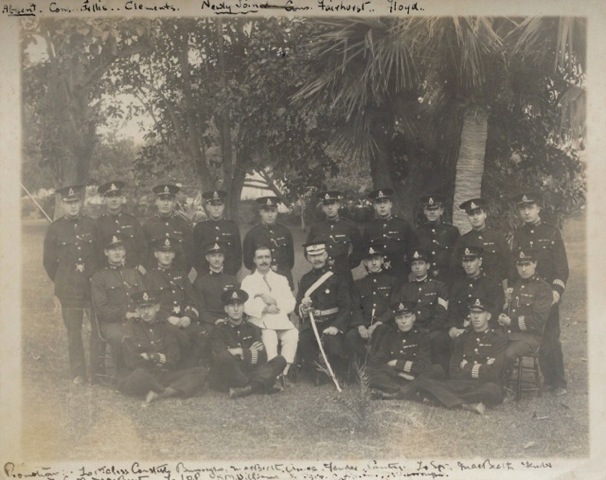
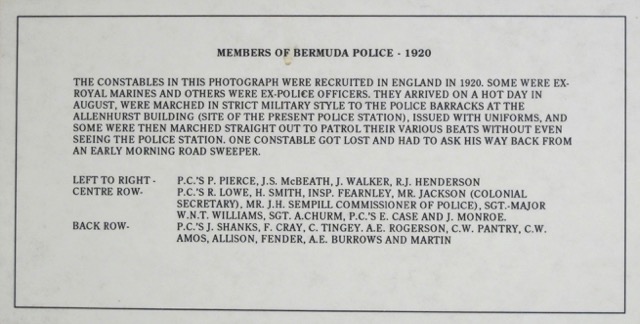
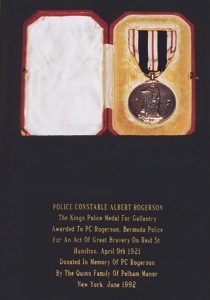
In the 1920’s the most dangerous street to patrol was said to be the eastern end of Reid Street, as a lone constable, Albert Rogerson, no doubt one of the new recruits from the UK, discovered when he was called there to deal with a noisy crowd gathered to watch two men fighting. When he tried to break up the fight he was set upon by one of the protagonists, and then by the crowd who armed themselves with bottles and sticks.
Rogerson managed to hang on to his prisoner until reinforcements arrived even though he had been severely cut with a sharp object. He was rushed to hospital where his life was said to have hung in the balance. He eventually recovered but lost the use of his hand and was discharged from the Force. He was later awarded the King’s Police Medal for Gallantry; we believe probably the first Bermuda policeman to do so, though not the last, while six men and women were duly sentenced to long terms of imprisonment – with hard labour. )
BERMUDA'S FIRST EVER DETECTIVE
Just after the War, with crime on the increase, the then Chief of Police, Mr. Semphill, appointed Bermuda’s first ever detective in 1919.
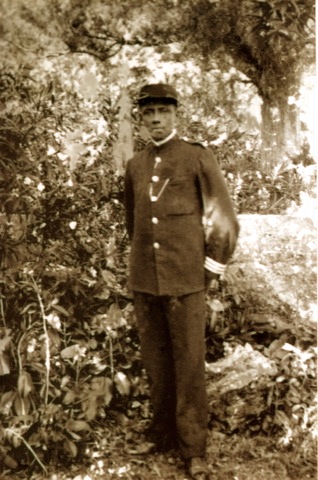
Charles Edward Simons had joined the Police Force as an acting Rural Constable in Warwick in 1902 and as a full-time constable in 1905. When he started as acting Rural Constable he was filling in for his father, Edward Benjamin Simons who took a trip to New York. Charles Edward quickly established a reputation as a highly efficient and resourceful police officer, and he was chosen as our first detective. After his appointment he was forever known as “D.O” or Detective Officer Simons.
For many years he investigated all serious crimes almost singlehanded. In 1924, “D.O.” and another young police officer were sent to the NYPD Criminal Identification Bureau for training in the new science of fingerprinting, and on their return they set up our Fingerprint Department. To the best of our knowledge this is the first ever course for any Bermuda police officer
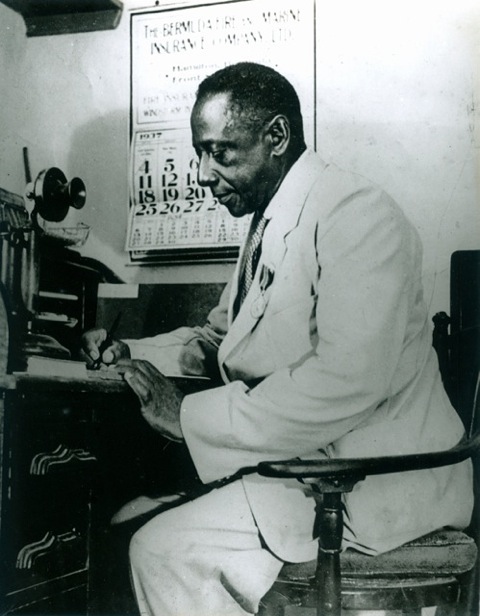
“D.O.” continued as head of CID and oversaw its development until his retirement in 1935.
I think it fitting to quote what was said about “DO” in the Bermuda Digest at the time of his retirement. “He had many narrow escapes from death and is practically unscathed. He has been what every police officer should be … fearless … he has seen on many occasions his assailant armed and yet himself unarmed conquers him unaided. Coolness of mind, a non-smoker, a teetotaler and his genial personality have been the principal factors which spelt success in obtaining such as enviable reputation.” Sounds to me like an ideal job description for a modern police constable!
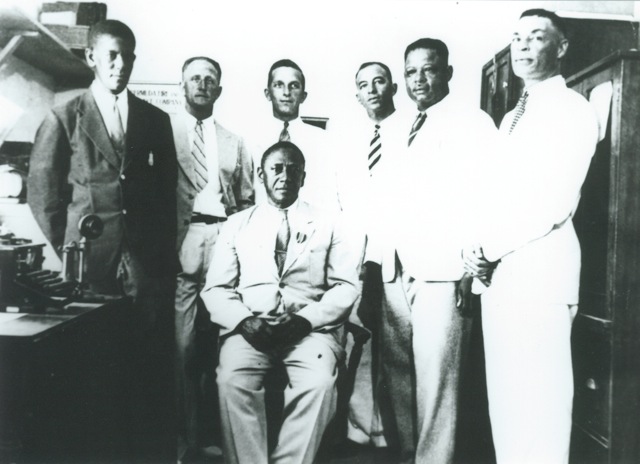
Here he is sitting with his team of six detectives. Sadly, D.O. Simons served in the days when black officers were not promoted to the rank of Inspector, and that is maybe the reason why he was always known as “Detective Officer” rather than Detective Inspector. There is no doubt though that “D.O” had both the ability and charisma to be a natural leader of men. And there was no doubt that he was in charge of black and white officers and highly respected by all.
D.O’s descendants include Dr. Marilyn Simmons and Marc Telemaque, and I must say that here is a man who’s story needs to be told in far more detail. We can’t change history but we can make sure that the legacy of D.O. Simons is never forgotten. I should add that his father, his older brother Joseph, and one of his sons, St. Clare, also served in the Police Force. Clearly a very law abiding family.
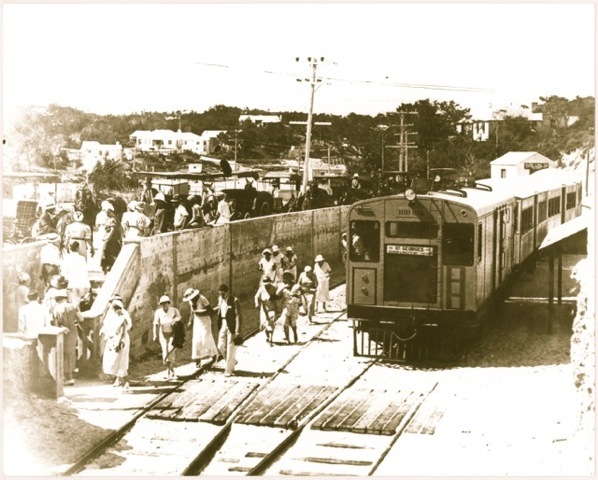
By the early 1930’s the Island began to experience major changes, most notably when the new railway opened in 1931, providing many Bermudians with the ability to travel the length and breadth of the Island for the first time. Police officers would have taken advantage of the trains to patrol their parishes and conduct enquiries.
There were several serious and fatal accidents attributed to the railway system and these would have to have been investigated by the Police. We also had our first fatal motor vehicle accident in 1937 when a pedestrian was run over by a Public Works truck.
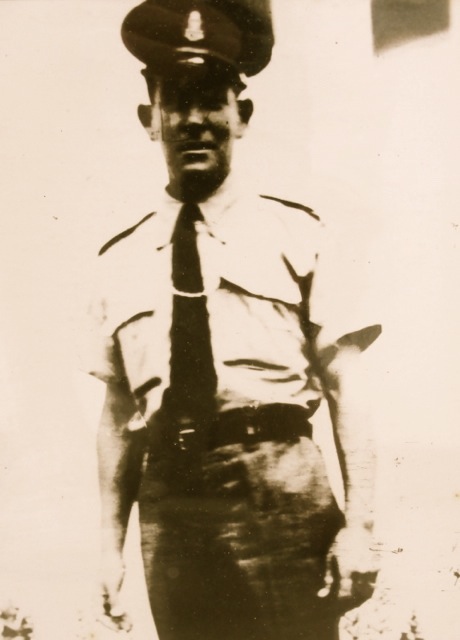
We believe that our first police officer of Portuguese origin was P.C. Joseph Ray Correia who joined the Force in 1933. We would be very interested to hear of any other Portuguese officers around that time.
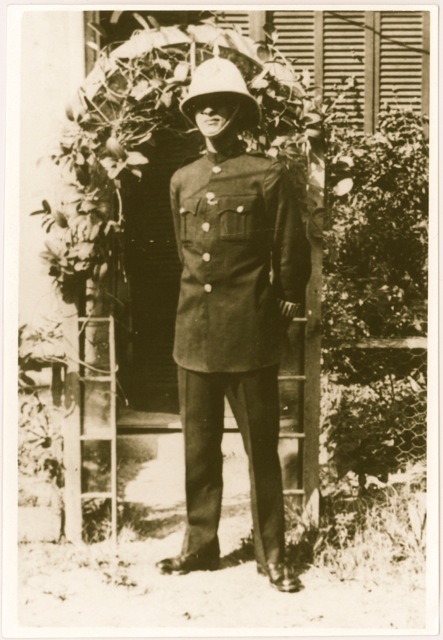
Crime was generally low and the relationship between the Police and the general public was said to be good according to another of our outstanding Bermudian police officers, Vernon Jackson, a revered member of the “Jackson Clan” who shared his memories with Andy Bermingham some years ago. Vernon confirmed that he rode the train to Somerset on his first day of duty. He also described in detail the time he was looking for an escaped prisoner and when he caught up with him, the man admitted he was tired of being on the run, and even agreed to sit on the crossbar of Vernon’s pedal cycle for a ride back to the Police Station. Sadly, Vernon left the Police Force when he realized that there was no upward mobility for men of colour. I also had the privilege meeting and knowing Vernon who was an absolute gentleman, with a sharp mind, a phenomenal memory and a great sense of humour.
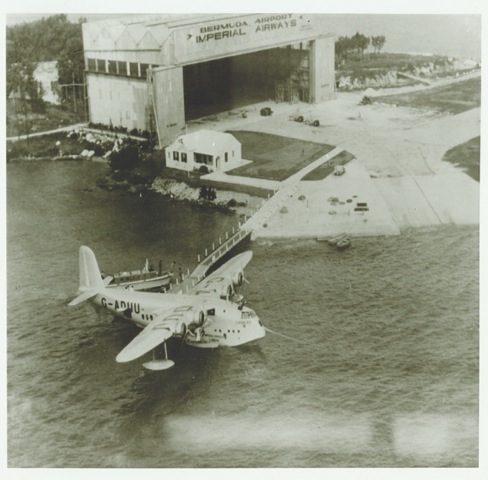
Through the 1930’s crime was said to remain low, the standard of living continued to improve, and tourism was growing with the inauguration of commercial airline services in 1937 when Imperial Airways (now British Airways) and Pan American World Airways established their flying boat services between New York and Bermuda, landing in the Great Sound when our sole airport or rather, seaport, was at Darrell’s Island. In those days you could no doubt take your boat out to Darrell’s Island and greet passengers as they disembarked - without having to face Travel Control - and passengers could keep their belts and shoes on!
We have heard quite a lot recently about the appropriation of land in the Tucker’s Town area for the development of tourism and the luxury homes there. Beautiful it might have been, but it was somewhat isolated and the new residents there felt rather vulnerable.
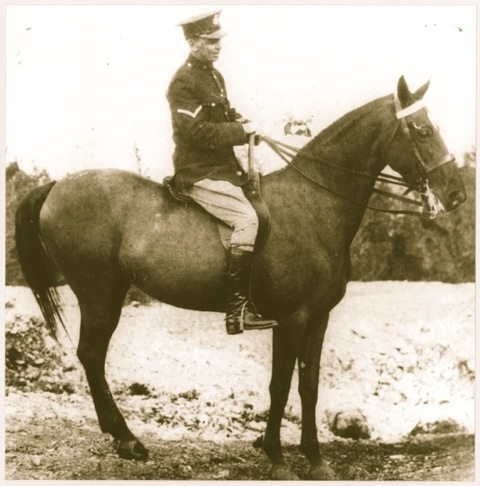
So they raised enough cash to buy a horse which they donated to the Police to be used by an officer to patrol the area. Here we see PC John Galloway our first and only mounted policeman on patrol. A downturn in the economy led to this unique patrol being withdrawn a few years later.
The Police Force published its first Annual Report in 1938 showing we had a total of 77 men. And just to give you a flavour of the time, there were 84 motor vehicles on our roads – these would be trucks, mechanical road rollers, stone crushers, public works vehicles and fire trucks - still no private motor cars - 590 public carriages (horse and buggies)….
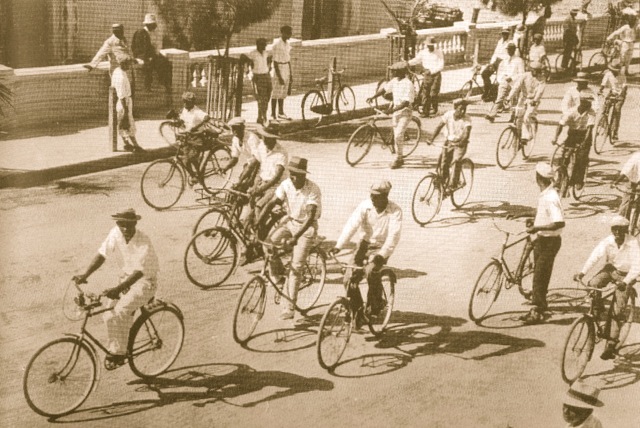
….. and a grand total of 19,863 (just under 20,000 pedal cycles when Bermuda’s population was less than 31,000. I have to wonder if Bermuda’s population was far fitter then than we are now!
And just in case you have this idyllic picture of pedal cyclists slowly wending their way around the Island, it was reported that “the chief cause of complaints regarding traffic is reckless riding by cyclists”. Traffic problems were beginning to emerge even then. Surely, it wouldn’t be out of place if Commissioner DeSilva were to include exactly the same sentence in his next Annual Report.
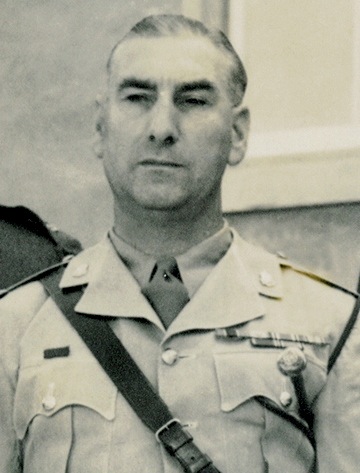
Commissioner McBeath took over just after the outbreak of World War II. and when work began on the two U.S. Bases in 1942, his biggest headache was trying to ensure that his men (and yes it was still all men)
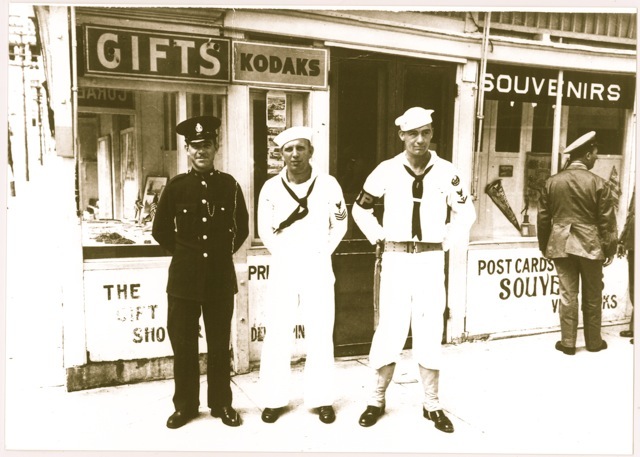
kept in check the American Navy Seabees who were building the bases and getting into trouble on a regular basis. Of course, that is one problem we no longer have with the closure of all the military bases.
After the War, there was great demand for the public to be allowed to have private cars, no doubt in part because the Island had been flooded with military vehicles for 5 years During a debate in the House of Assembly in 1946 it was said that with the introduction of the “one car per family rule” the maximum number of motor vehicles in the foreseeable future would be between 500 and 1,500. Some might say this shows how our politicians can occasionally be wrong! Motor vehicles had finally arrived in Bermuda and there was a need for the Police Force to keep up with the times.
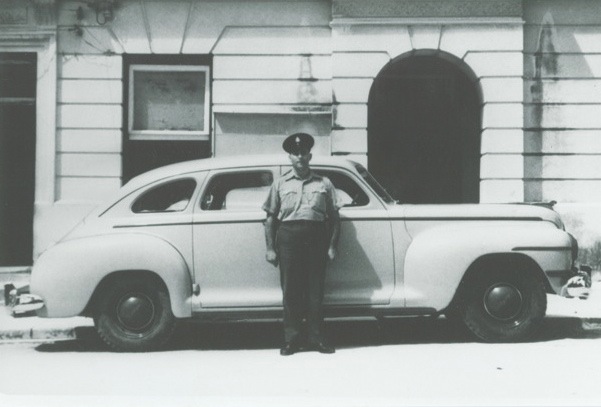
Here we see the pride of the fleet, our first police car, a Dodge Sedan, purchased second-hand for the use of Commissioner McBeath and driven by Constable John Marshall who went on to become the first Inspector in charge of the Traffic Department.
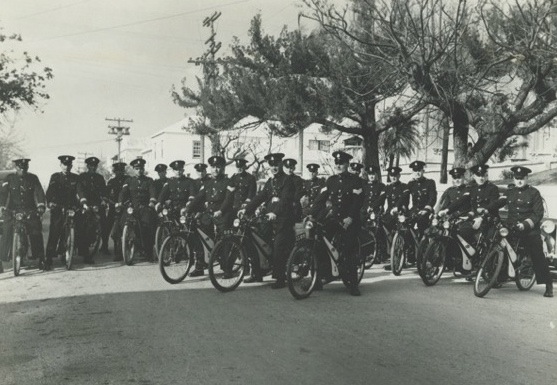
Commissioner McBeath oversaw the purchase of 6 police cars and later a delivery of Excelsior 2-gear autocycles for use by District Constables and Supervisory Officers. Could the Police be said to have started the motor cycle craze?
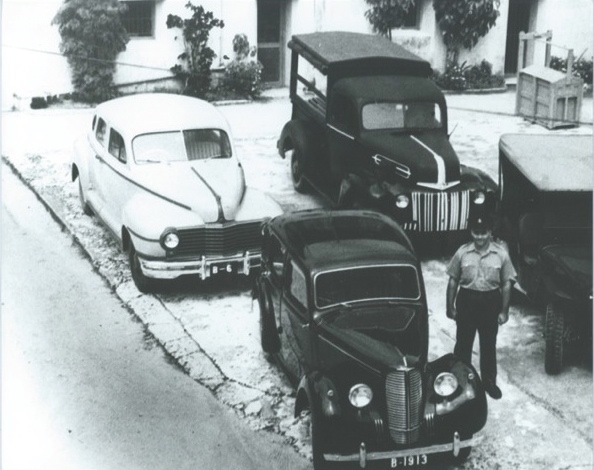
Believe it or not these vehicles were part of our police fleet, seen here between the Police Station and Hamilton Jail, with P.C. John Marshall.
The early 1950’s saw technological breakthroughs in the Police. Police Stations were provided with radios for communication, and these were followed by two-way radios in police cars. And by now some reports were being typed on manual typewriters.
There was a rapid increase in motor vehicles resulting in more frequent, and often fatal accidents, with speeding cited as a major cause of accidents. Again, has anything really changed?
The Police decided to clamp down on speeding and the late Inspector “Tug” Wilson once described to me how the first motorist was “trapped” , or should I say “flagged” by the police. Sgt Wilson and a group of policeman took with them 4 white flags and a couple of stop watches. They measured a section of Middle Road in Warwick where Belmont Hills golf course is now located, and had two men at the start and two men at the end of the stretch. When a speeding truck drove by, the two men at the starting line raised their flags and the stop watches were started. As the truck reached the measured distance two constables lowered their 2 flags and the watches were stopped. The average time of the journey was duly calculated, and “Scarface” Hutchinson made history when he became the first driver ever convicted of speeding at something like 23.5 miles an hour. The speed limit at that time was 20 miles per hour.
But this method of catching speeders was hardly efficient! In 1951 the Police purchased their first electro-matic speed meter, and over the years, have used ever more sophisticated radar devices to catch speeders, the latest being considered are speed cameras that capture both the speed and a photo of the rider or driver and vehicle number.
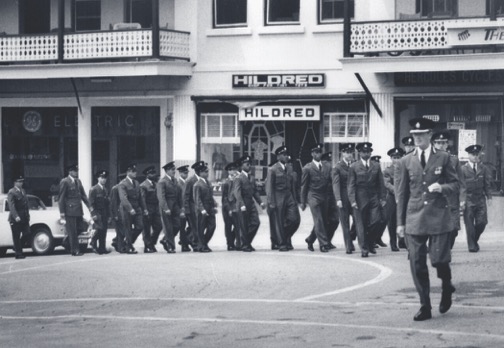
The Reserve Police Constabulary was formed in February 1950, headed then by Reserve Commandant, Captain Ross Winter, and over the years the Reserves, now known as Bermuda Reserve Police, have provided invaluable support and assistance to the Police Service.
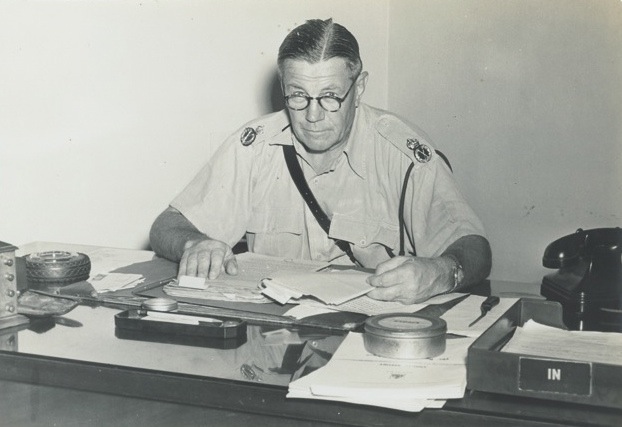
Shortly after being appointed Commissioner in 1958, Mr. Henderson accepted a Government invitation to relocate the Police at the recently vacated British Garrison facilities at Prospect which became our headquarters and Traffic Department.
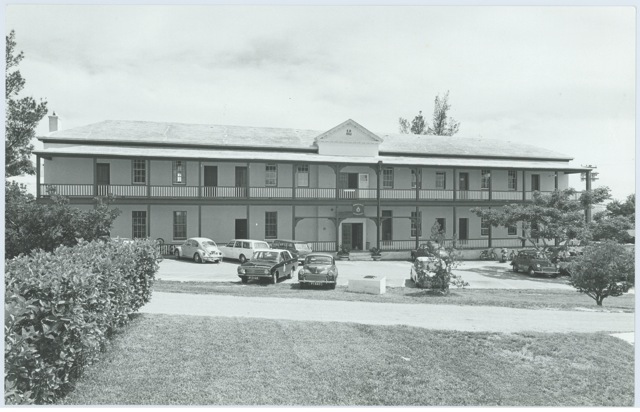
One other legacy from the British Garrison was our first female staff member and first civilian clerk, who had been working at the Garrison.
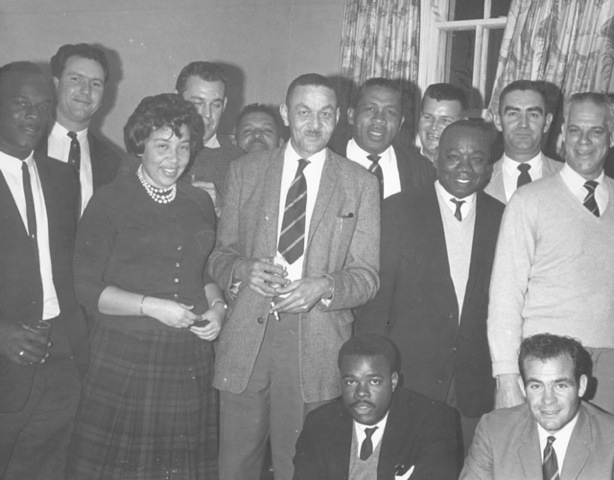
Miss Carole Royer was hired by then Inspector John Marshall and stayed with us until she retired in 1999 after 40 years during which she served under no less than 7 Commissioners. If you look closely at the photo you will see 3 young detectives who all went on to become Commissioner of Police.
The Police Force was tested to the limit in 1959 when Bermuda recorded no less than 6 murders and it marked the first time that Scotland Yard detectives were seconded to the Island to assist in successfully investigating the infamous Warwick murders.
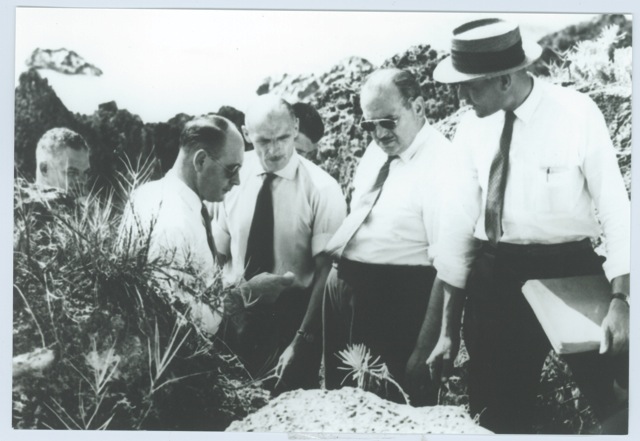
Leading the local team was Inspector Oliver Trott who was a great detective in the tradition of “D.O” Simons, and went on to become Chief Superintendent before he retired. Here he is with the Scotland Yard officers examining the scene of one of the murders.
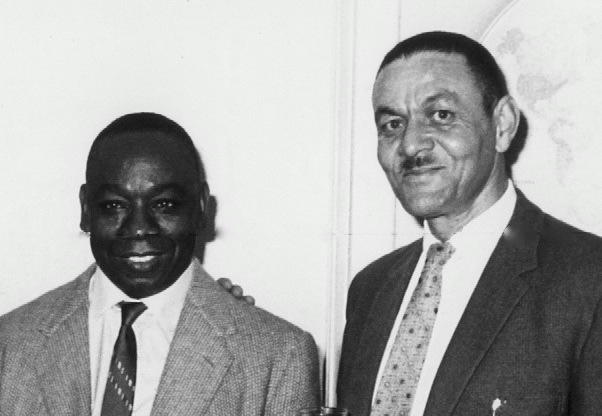
Seen here is Inspector Trott and Detective Sergeant Milton Murray Marsh who played a significant role in identifying the culprit even before the Scotland Yard detectives arrived in Bermuda. More of Milton Marsh in a moment.
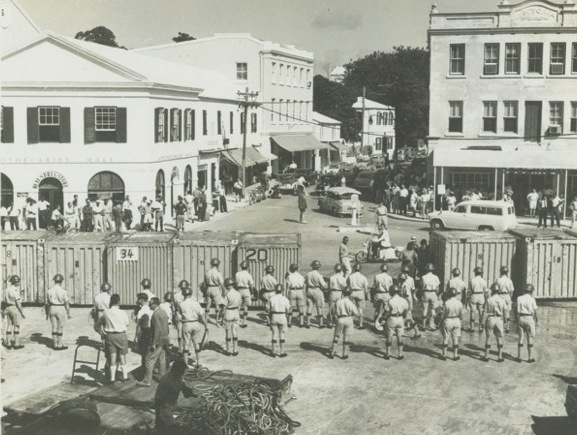
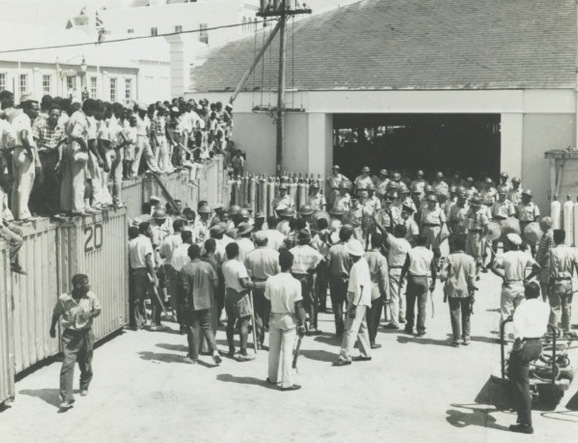
The Police had to deal with the Island’s first major civil demonstration in 1959 when dock workers marched through the streets of Hamilton to the No 1 Shed on Front Street and were faced by police officers sent to guard the docks. This is believed to be the one and only occasion when a magistrate read the Riot Act from a nearby shop balcony, and fortunately peace prevailed as the crowds gradually dispersed.
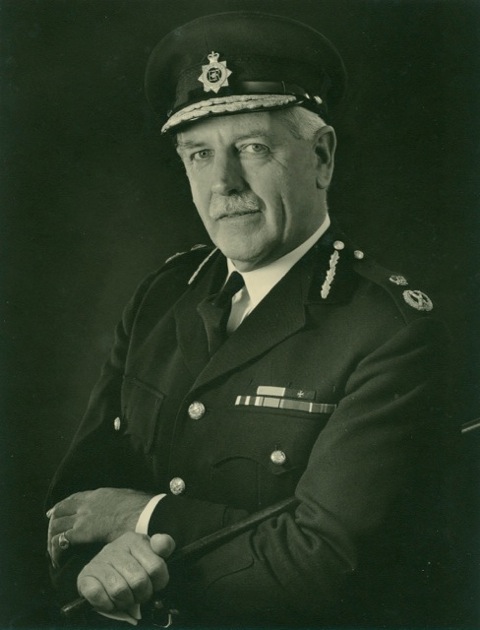
Our next Commissioner was George Robins, a former Army Officer who assumed command from 1961 until 1969. There is no doubt that Commissioner Robins led the Police Force at a very difficult time in Bermuda’s history, when the community faced a long period of social unrest as people of colour fought for equal human rights and social justice, with the Police invariably finding themselves in the unenviable position of trying, sometimes in vain, to maintain law and order.
However, in looking back on George Robins’ legacy I believe he made more significant changes in the organization of the Police Force than any previous Chief of Police, and that he made every effort to bring the Force up to par with other small, modern Forces around the world, particularly with regard to training.
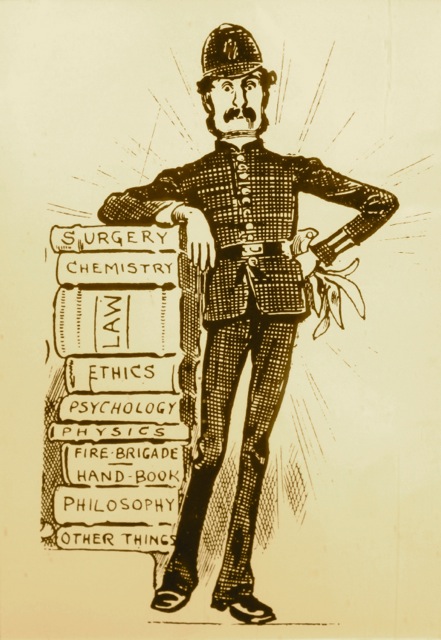
Although we have only scant information about how our first police officers were trained, for many decades those officers hired locally were given at maximum, a couple of days to read through the law books. Vernon Jackson explained that when he joined in 1933 it was purely a case of “on the job” training. A few years ago I interviewed retired Inspector Milton Murray Marsh who was then 101 years old (and believe me, there were no flies on Milton!) and asked him about the training he received when he first joined the Bermuda Police in 1941.
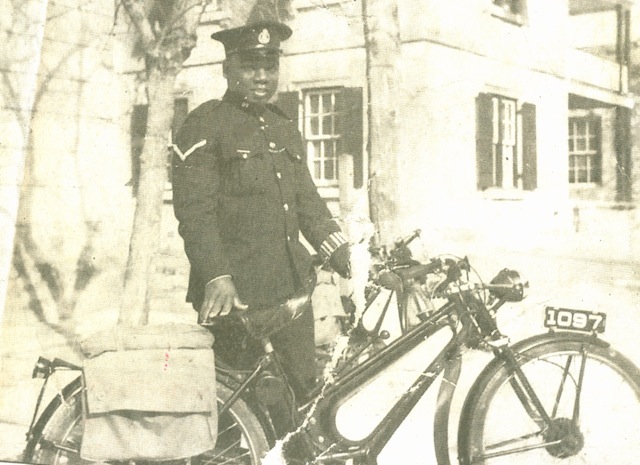
Milton quickly replied, "Next to nil." He said he was handed a worn out flashlight, a pair of handcuffs, and a truncheon, and off he went to patrol the beat in Hamilton with absolutely no training other than reading a few law books.
You may recall that I mentioned the first overseas recruits brought to Bermuda in 1920, and that they were either trained police officers from the Metropolitan Police, or British Royal Marines who would have been professionally trained.
By the 1950’s it was the policy when hiring men from the UK to send them to one of the Police Training Schools in England for a 3 month training course before bringing them out to Bermuda.
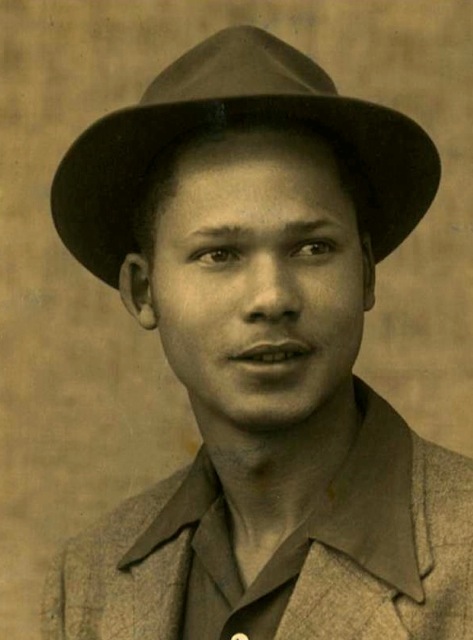
This was far cry from training opportunities for local recruits. This young man, who went on to become Chief Inspector Hilton "Jellybean" Wingood, had the same experience as Milton Marsh when he joined as a young recruit in 1955 – no training at all!
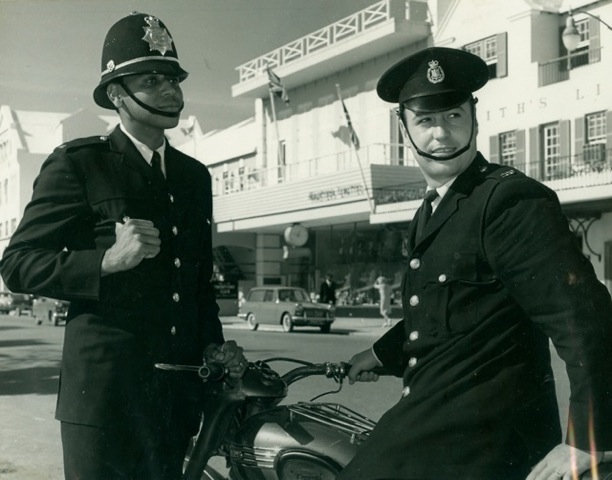
However, when Lynn Hall joined the Force one year later in 1956 he recalls that he and several other local recruits spent about a week at the police station on Parliament Street, with a Superintendent as their instructor going through the law books, with relevant sections specially marked, and some written instructions on how the Force was structured, how to deal with everything from children, to dangerous dogs, and how to take care of their uniforms.
Change was coming for local recruits – but at a snails pace. This was, of course, in sharp contrast to overseas recruits, such as PC Dryburgh, also in the photo, who received 3 months training in England before arriving here.
Just one little anecdote from Lynn Hall about dealing with domestic disputes during his early days on the beat. He and another officer attended a house off Parsons Road where a husband and wife were said to be having a violent row. Unbeknown to the two officers, the husband had stormed out of the house, and when they knocked on the front door, the lady of the house was upstairs in her bedroom and thought it was her husband returning to cause more trouble. She promptly picked up the 'night bucket 'from under her bed, opened her window, and deposited the contents onto the heads of Lynn and his partner. If there is anyone here who has no idea about what a night- bucket was, and what it would contain, just speak to one of the older members of the audience after this talk.
Lynn was a very popular and much loved member of Force, and earned his nickname, “Mr. Outward Bound” because he ran our popular Outward Bound programme for many years.
To his credit, Commissioner Robins realized the imbalance regarding training local recruits and it was he who set up our first Police Training School when he hired a full-time experienced training officer, Inspector Roy Chandler, who organized our first 3 month Police training course in 1962 set up along the same lines as the UK Police Training Schools. For the first time the playing field was being leveled for local recruits.
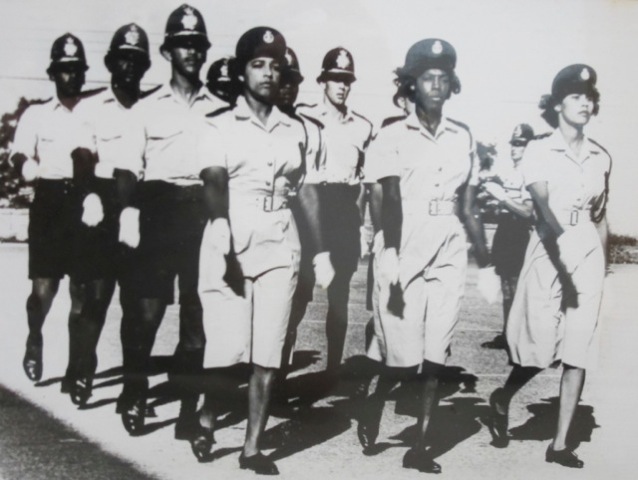
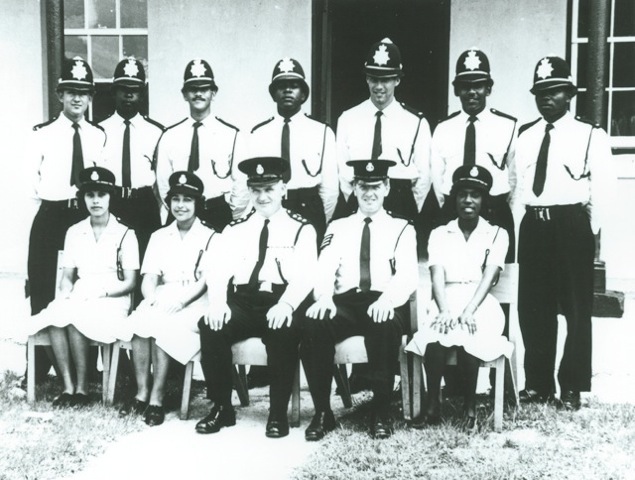
And here are members of our first course, which you will see also includes women. The instructors are Chief Inspector Roy Chandler and Sergeant James Moir.
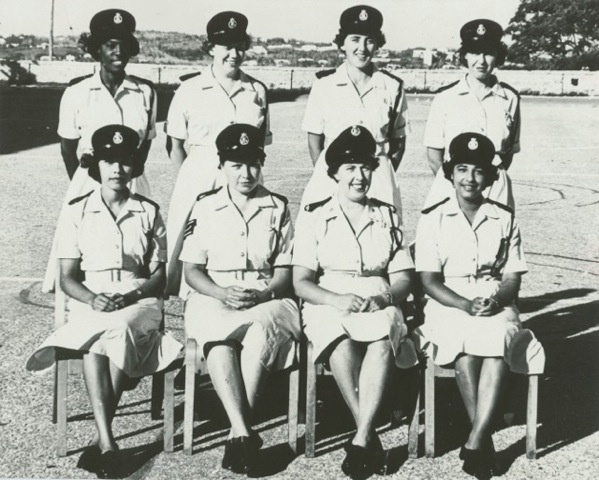
Commissioner Robins made the decision to recruit women, bringing in an experienced Woman Inspector from the UK, to organize and head the department, and here are our pioneer policewomen in 1962 with Inspector Isobel Lee.
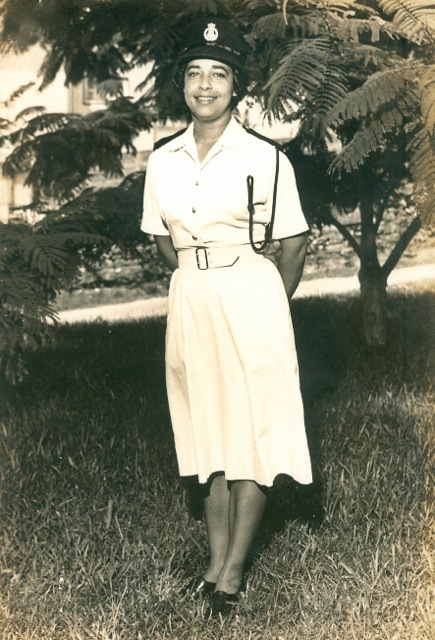
Our first female Bermudian police officer, Jean Vickers, went on to head the Police Women’s Department, and also spearheaded another innovation made during the time of Mr. Robins, the Juvenile Liaison Scheme designed to assist young first time offenders without giving them a criminal record. I truly believe we would be much better off if the Police had been able to continue operating the JLS.
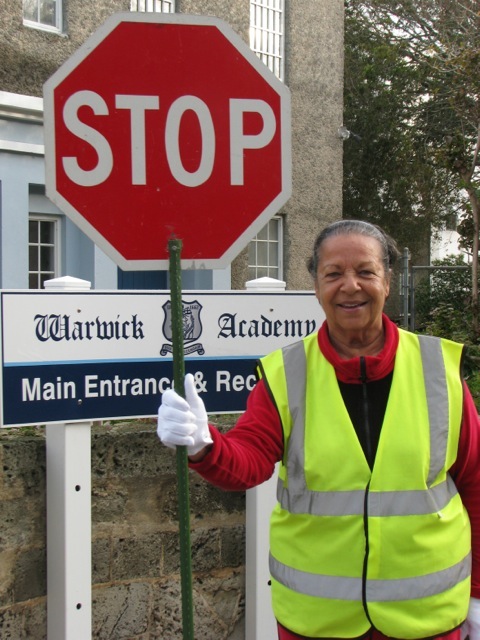
If Inspector Vickers looks familiar you may have seen her for many years as a school crossing lady outside Warwick Academy.
In order to attract more Bermudian recruits the Force had also started to hire Cadets in 1960, and the Cadet scheme was expanded by Mr. Robins. Within a few years all cadets were required to attend the Bermuda College at Police expense to take college courses and improve their academic skills where necessary.
Other departments set up during Mr. Robins time included the much needed Marine Section because the police had no way of patrolling Bermuda’s waters or visiting crime scenes on islands.
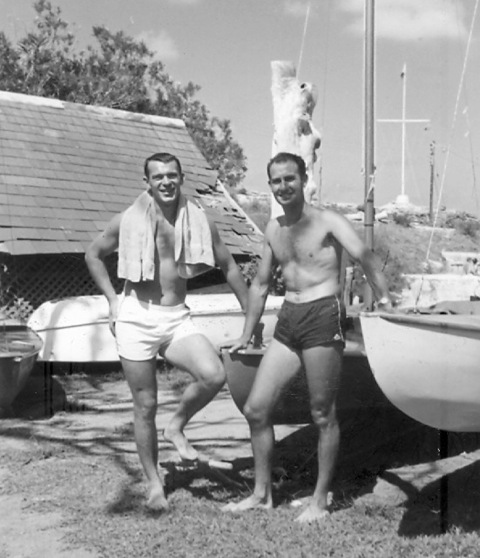
There were no funds for building a boat so two enterprising young constables, Dave Garland and Derek Jenkinson who both had marine and boat building experience in the UK, came up with a design and volunteered to build our first police boat at Admiralty House in a matter of a few weeks after persuading the Corporation of Hamilton to donate £125 and some spare parts.
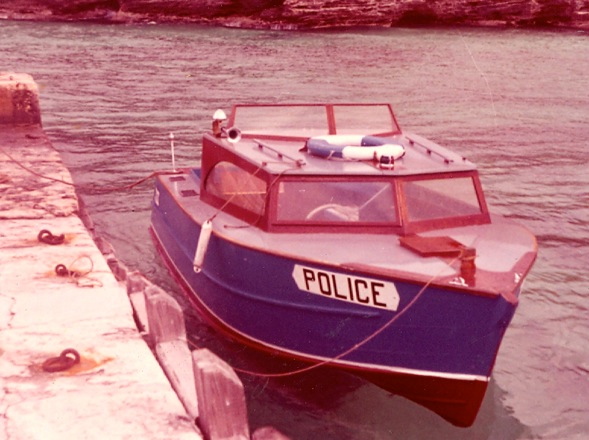
The “Blue Heron” was duly launched in the summer of 1962.
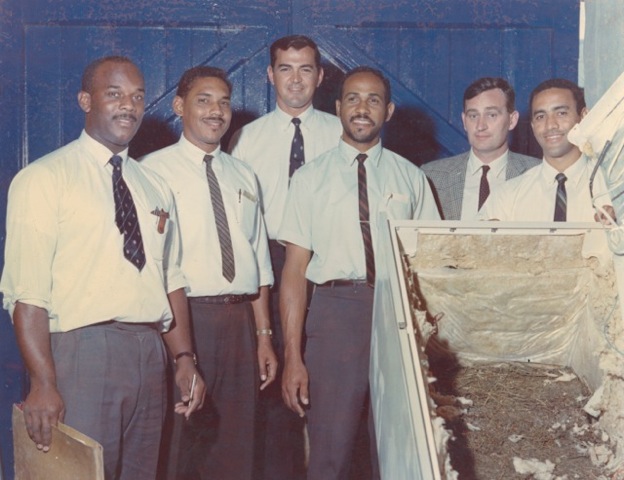
Our Narcotics Department was created in 1961, headed by Sgt Leon Bean and Harold Moniz, and then by Sgt Fred Bean. This photo shows the squad with their first major marijuana seizure, and there is no doubt that fighting the so-called drug war has, and continues to be, a major strain on Police resources.
Cycle Squad was created to deal with the increasing number of stolen auxiliary cycles and motor cycles. I don’t know of any other Police Force that has literally no thefts of cars, but has an ever persistent problem with the theft or removal of motor cycles, even to this day.
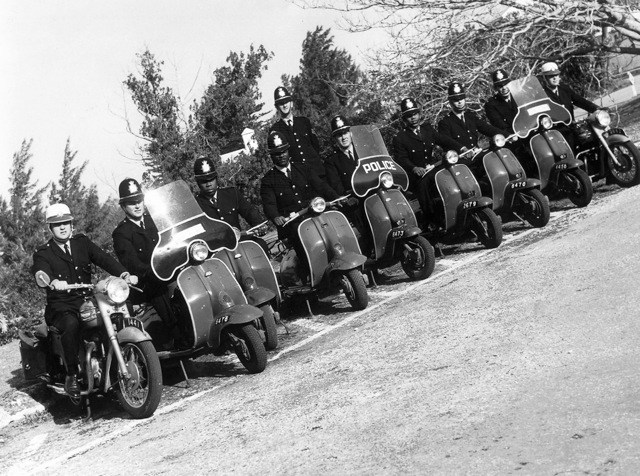
And after an absence of several years, Parish Constables were re-introduced and provided with scooters to police their districts.
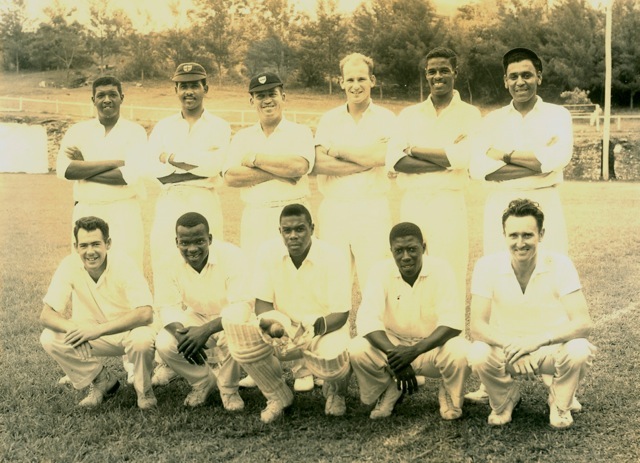
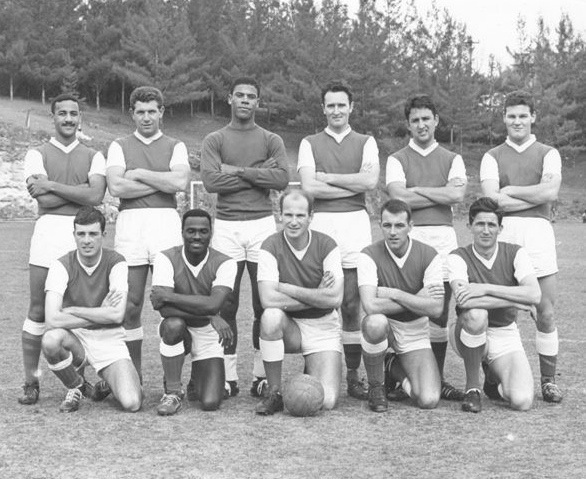
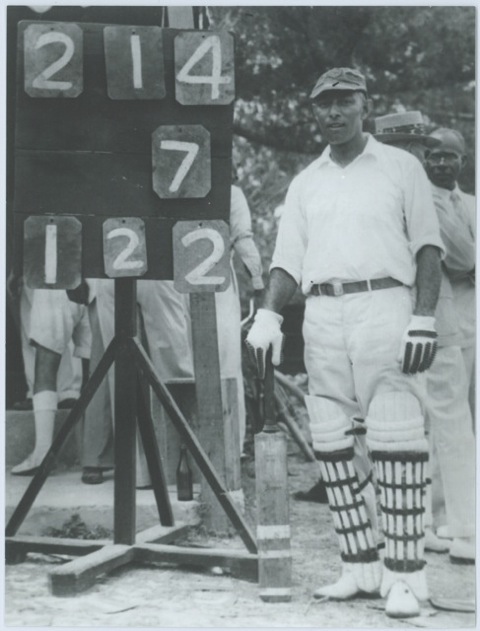
It would be remiss of me not to mention one of our greatest police Cup Match cricketers who made history in two ways. PC Edward “Bo” Swainson was the first batsman to score a century in Cup Match in 1937 with a score of 122 not out. He narrowly missed repeating the feat again the next year, scoring 99 runs before losing his wicket.
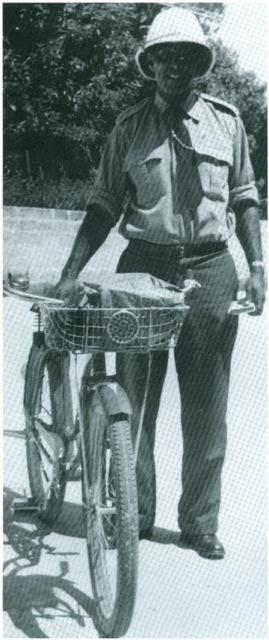
“Bo” is pictured here in 1938 with his pedal cycle on patrol in St. David’s before being transferred to CID. He was an excellent policeman and later became the first black officer to be promoted to the rank of Inspector.
Getting back to the days of Commissioner Robins, the proportion of white Police officers (mainly expatriate) to black Bermudian officers, compared with the racial make-up of Bermuda, had been a constant subject of debate amongst both the Police and the public since the founding of the Force. In 1965, in an attempt to redress the unequal racial balance, Commissioner Robins sent senior officers to Barbados specifically to recruit black officers. Seven Barbadians were chosen to join six Bermudians on Basic Training Course #7.
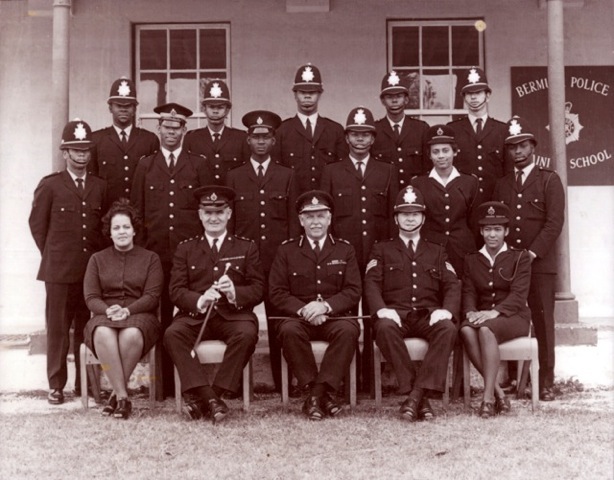
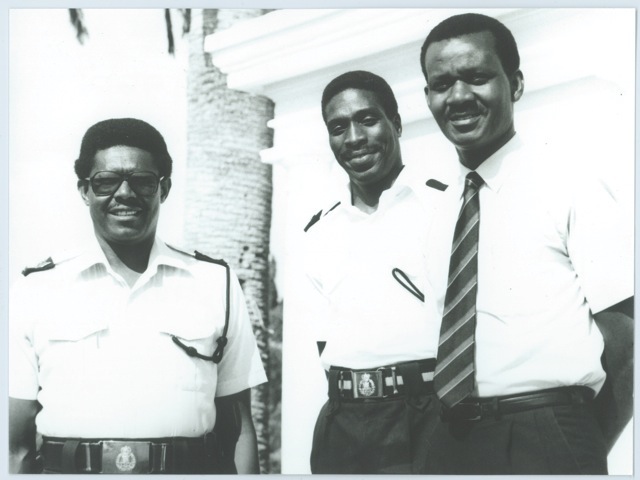
Officers on that course included PC’s John McConnie, Vendall Bridgeman and Orson Daisley, all of whom rose to the rank of Inspector and have since retired from the Police after years of dedicated service.
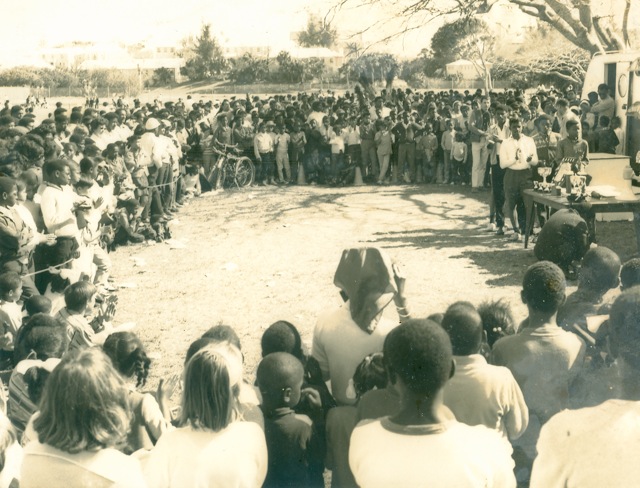
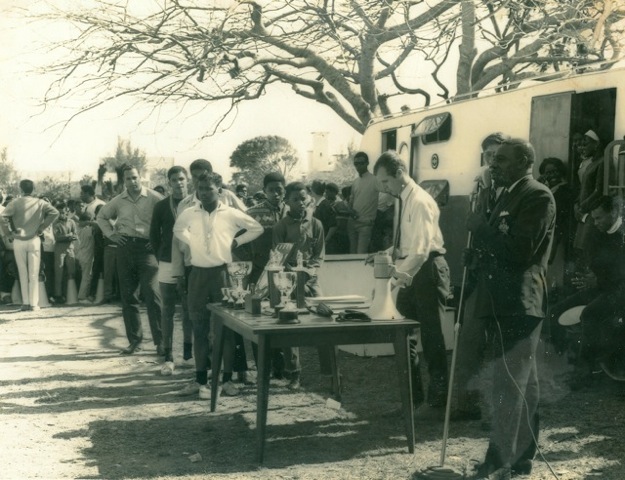
And in order to help bridge the gap between young people and the Police, we held our First Police Pedal Cycle Gymkhana, organized by constables Ray Sousa, Gary Perinchief and myself, in Bernard Park in 1969, over two days, which proved to be exceptionally popular.
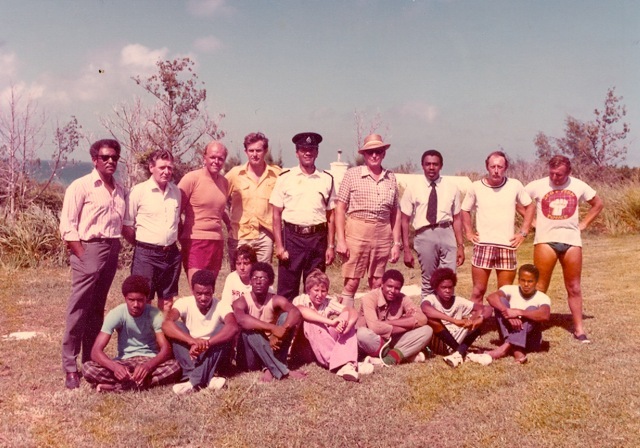
It was followed by the creation of Bermuda’s Outward Bound programme which has taken many hundreds of young Bermudians on courses both locally and abroad and had them doing things they never dreamt they could achieve.
I’m delighted to say that both Outward Bound and the Cycle Gymkhana are still thriving.
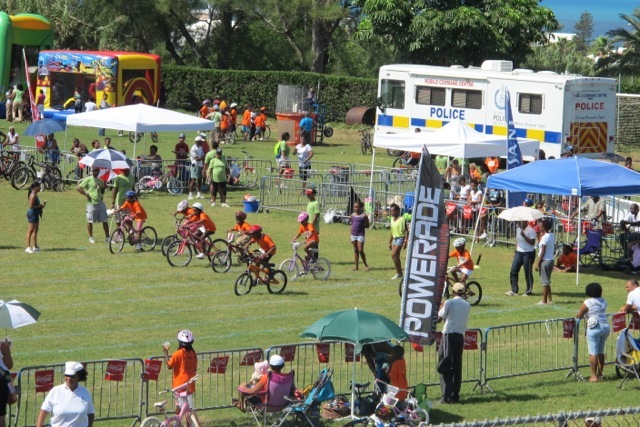
And anyone who was around in Bermuda during the 1960’s will remember two activities that gave a lot of pleasure both to the Police officers involved, and to the public.
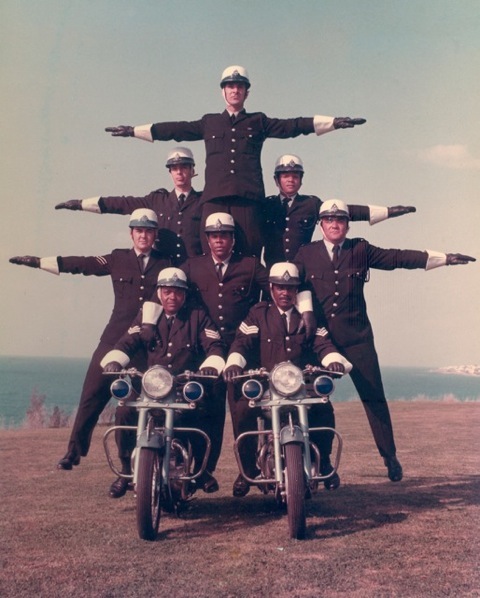
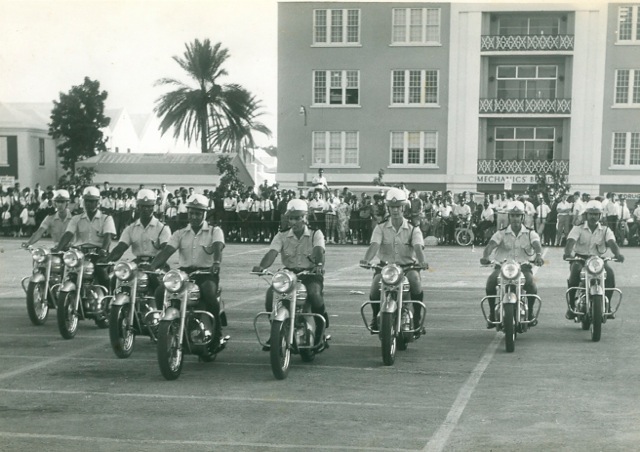
One was the Police Motor Cycle Display Team performing their high precision manouvres at shows all over the Island for many years and were greatly admired by both young and old for their daring deeds.
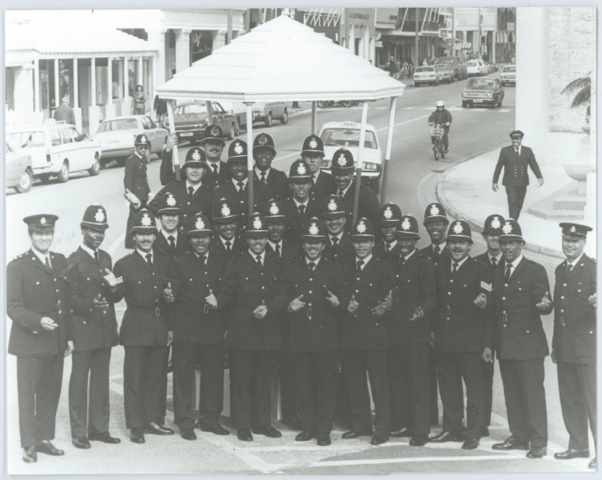
The other was the Police Choir who first came together in Somerset at a Christmas gathering, and went on to perform at a very high standard, and were in great demand both locally and abroad.
The 1960’s though was a decade in which Bermuda went through a very difficult time politically and socially, when changes were much needed to bring about a more equitable society.

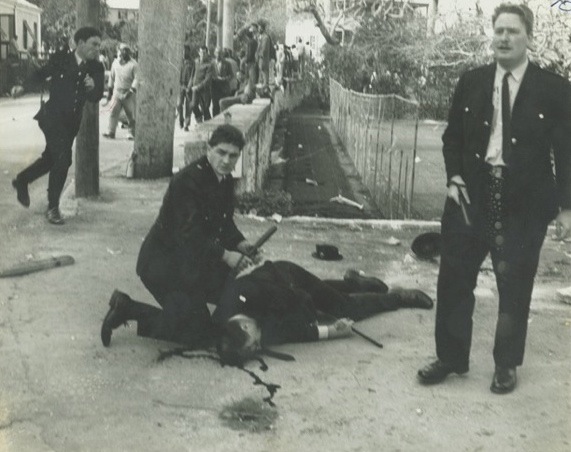
Unfortunately for the Police we were at the epicenter of these seismic changes, none more so than the BELCO disturbance on February 2nd 1965, in which some 17 police officers were injured – one very seriously. The Police were required to maintain law and order even when some of the laws of the land were seen to be unfair and unjust.
I have no intention of attempting to minimize the tremendous social changes that Bermuda has struggled through, but I would certainly argue that the Police Force was genuinely striving to be fair, to make sure that its officers were well trained, and that by and large, law and order were maintained as fairly as possible.
But if officers serving with the Force in the mid-60's thought they had seen Bermuda through its worst days, they were sorely mistaken. The darkest period in the history of this Island was about to begin.
I simply don’t have time to dwell on those dark days in the 1970’s starting with the shooting death of then Commissioner, George Duckett, followed by the assassination of Governor Sir Richard Sharples and his ADC, and then just a few weeks later the brutal shootings of two men during an armed robbery at the Shopping Centre on Victoria Street, along with a series of shootings and other serious crimes and robberies.
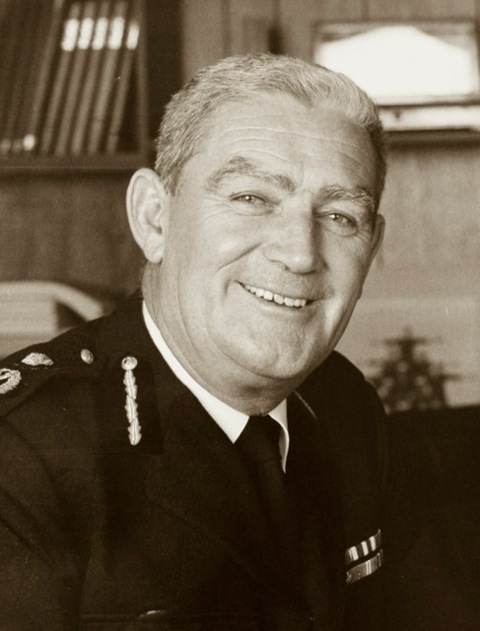
Restoring law and order, and bringing to justice the guilty persons were a major priority for the Commissioner who took over the reigns following the death of Mr. Duckett, but LM “Nobby” Clark was one of our most popular and charismatic Commissioners.
As most of you will know, following the biggest investigation in the Force’s history, with assistance from Scotland Yard, two men were tried, convicted, sentenced to death. Their hangings, the last in Bermuda, in December 1977 sparked serious rioting, but the Island then seemed to settle down. Our CID had gained invaluable experience in the collating of information and investigating serious crimes.
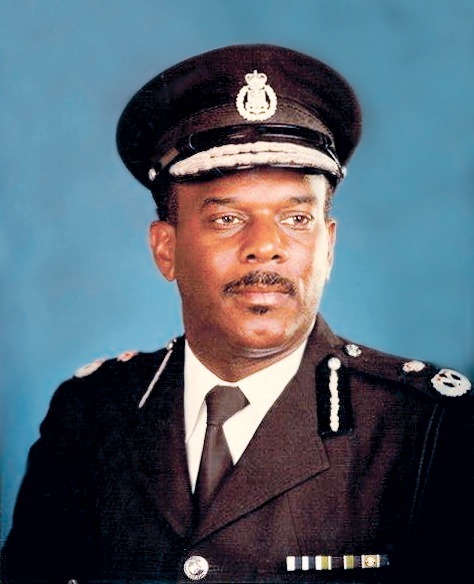
Following the retirement of “Nobby” Clark his successor made history in February 1981, when Frederick “Penny” Bean became our first born-Bermudian officer to rise all the way through the ranks from Constable to Commissioner.
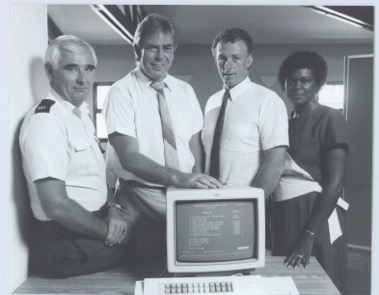
Computer Training - Part of Training for all officers
During Mr. Bean’s stewardship he oversaw many major advances in the Police, particularly in the areas of communications and computerisation.
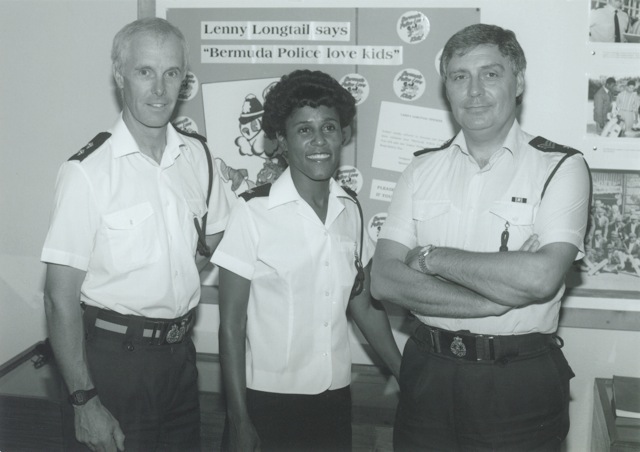
Mr. Bean also recognized the need for a more sophisticated Community and Media Relations department to replace and improve the old Press Liaison Office and the vital importance of involving the public in the fight against crime.
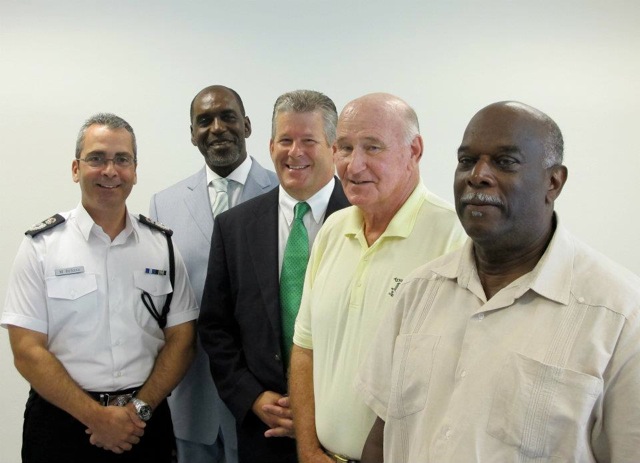
We have had a further eight Commissioners since Mr. Bean retired - Clive Donald, Lenny Edwards, Colin Coxall who had our name changed from the Bermuda Police Force to the Bermuda Police Service in 1995, John Jaques Lemay, Jonathan Smith, George Jackson -
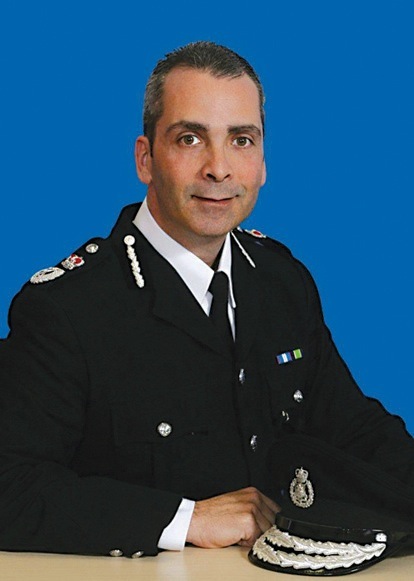
And of course our present Commissioner, Michael DeSilva who by my reckoning is the 6th Bermudian police officer to pass through all the ranks to reach the top job after starting as a young Cadet in 1985. He is also the 4th born Bermudian to become Commissioner of Police.
I would like to conclude by making just a few very brief comparisons between the early days of policing and today.
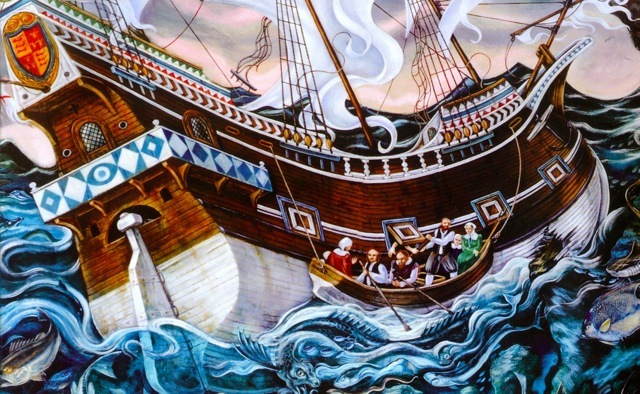
Murders have been committed in Bermuda since the earliest of times and we are still plagued with them today, most now involving firearms. Even so, our constables on the beat and in patrol cars still travel around unarmed.
Our early constables were given very little, if any training before being sent out on the beat.
All recruits now attend a 4 month course at the Police Training School where they receive instruction in a wide variety of subjects, some of which were unheard of until just a few years ago, such as mediation, diversity training and team building. There is now a realization that in today’s complex world police officers have to be equipped and highly trained, with officers receiving extensive training both locally and abroad to better equip them to carry out their duties with professionalism. A far cry from spending a few days reading law books.
And that includes members of the Reserve Police, who also undergo a 16 week foundation course, wear the same uniform as regular officers, and are a vital resource supporting the Police Service.
It’s noteworthy that just 2 weeks ago the largest number of recruits on any course, 25 in total, all graduated from the Training School and are now out on the streets doing the job they have been well trained to do.
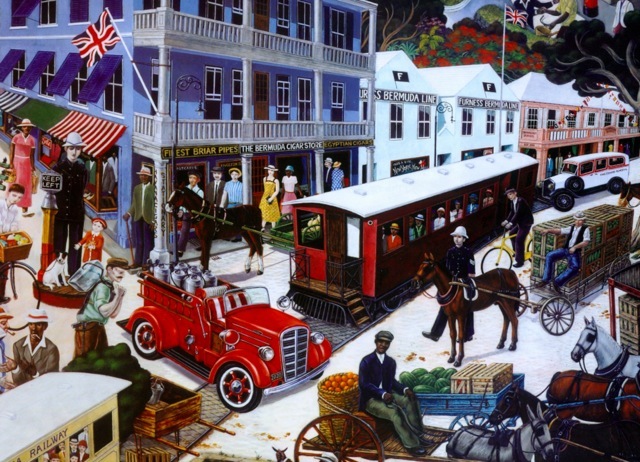
We have come a long way from those early days when most Bermudians lived and stayed close to their own neighbourhoods, then gradually became more mobile as modes of transport progressed from boats, horse and carriages, pedal cycles, the railway, and finally, motor vehicles in far greater numbers than were ever envisaged.
We now have over 46,000 motor vehicles on Island, and despite our 35 kmh speed limit, which almost no-one adheres to, we have far more people killed or injured in traffic accidents than we have ever had killed or injured by crimes of violence. As an example, we have experienced a substantial increase in murders since the year 2000 due mainly to gang related violence, but even with these terrible murders at their highest levels, the number of deaths and serious injuries caused by road traffic accidents on our roads way outstripped gang related gun deaths by almost three to one. Yes , we need to tackle our gun crime, but we also need to tackle the tragic loss of lives and serious injuries caused by roads accidents
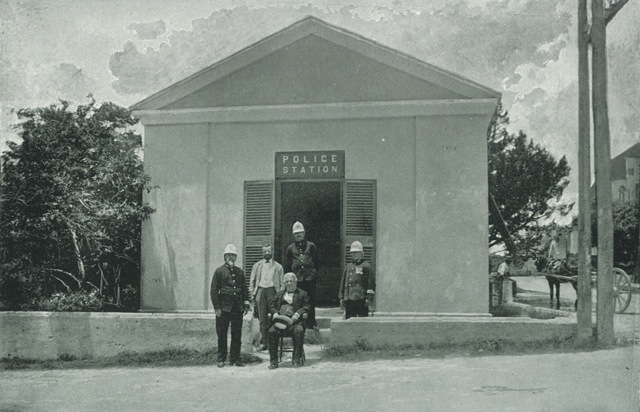
Finally, here is the earliest photo of Hamilton Police Station, taken in 1890, just a year after the Force was founded. In the background you can see the Cathedral which I believe was just being completed. ….
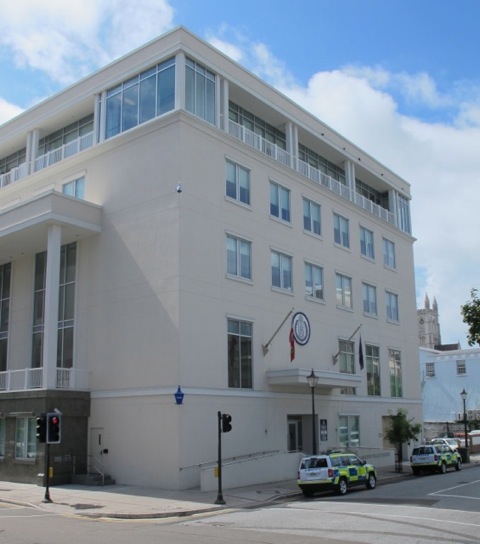
… and here is our new Hamilton Police Station today. You can still see the Cathedral in the background. We may not have moved very far physically, but we are light years away from the Police Force in 1879.
Our police service today is expected to be all things to all people, and I would venture to say that in 2014 we have a Police Service, led by Commissioner DeSilva and his team, that serves us well and for which we can be justly proud.